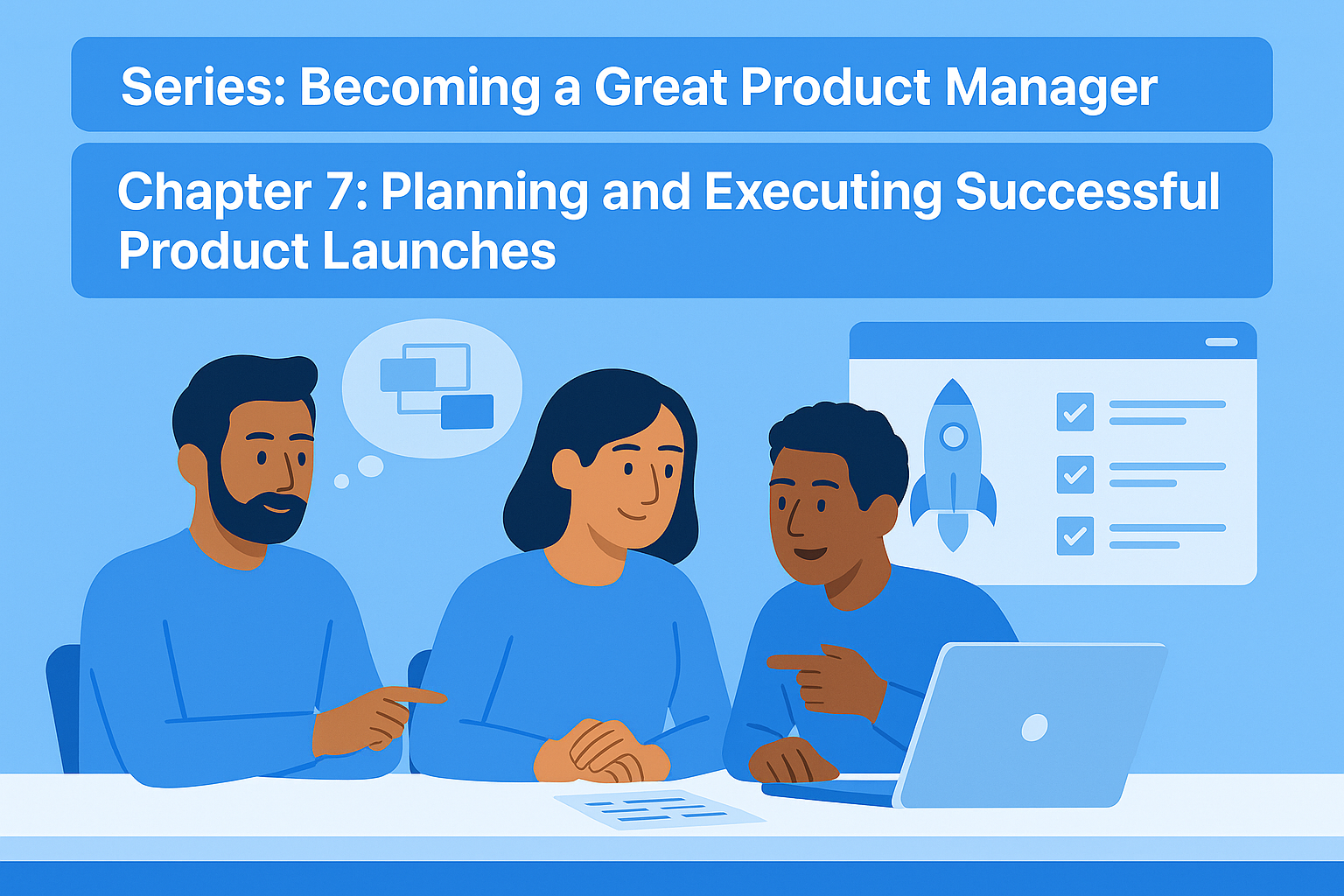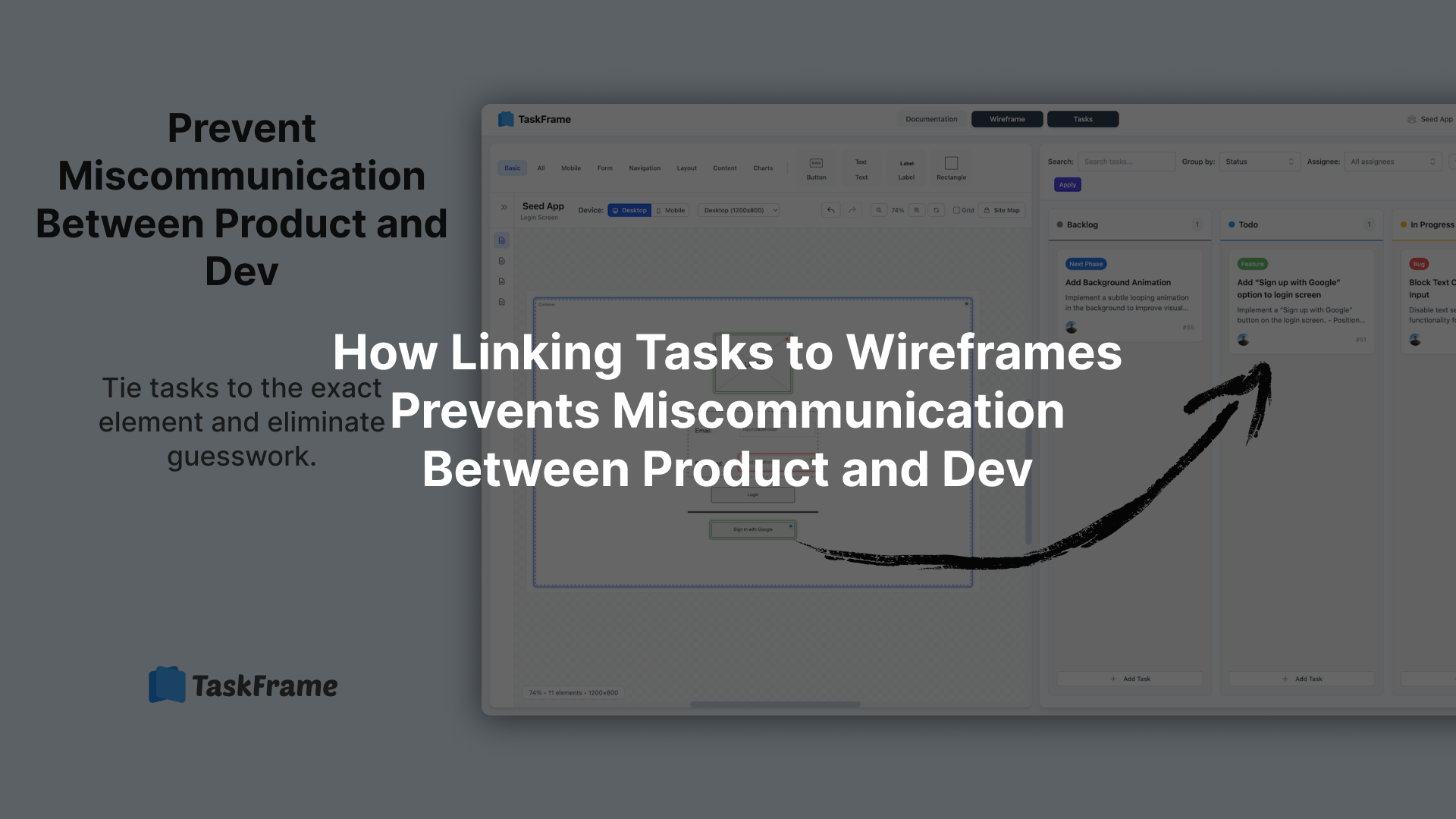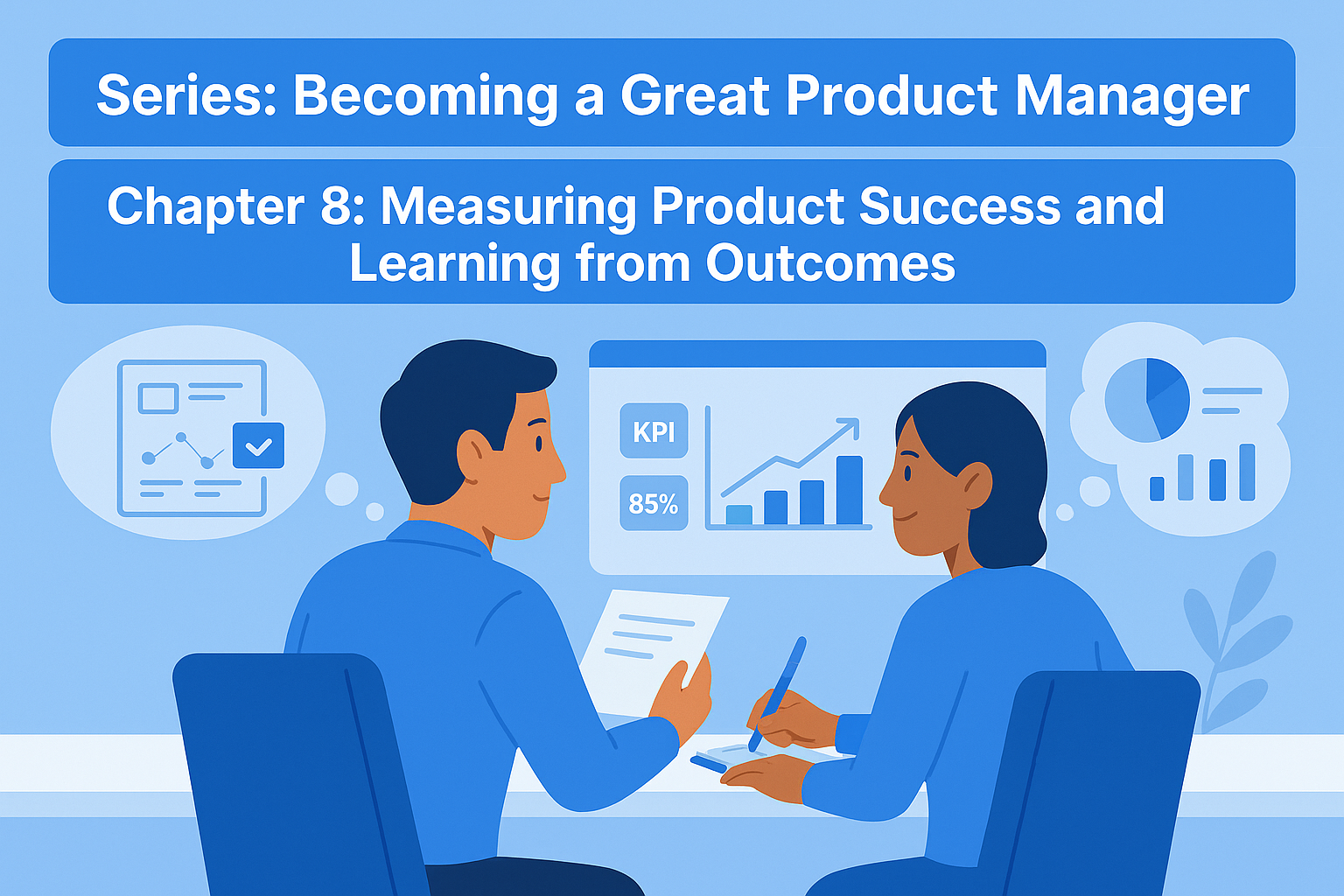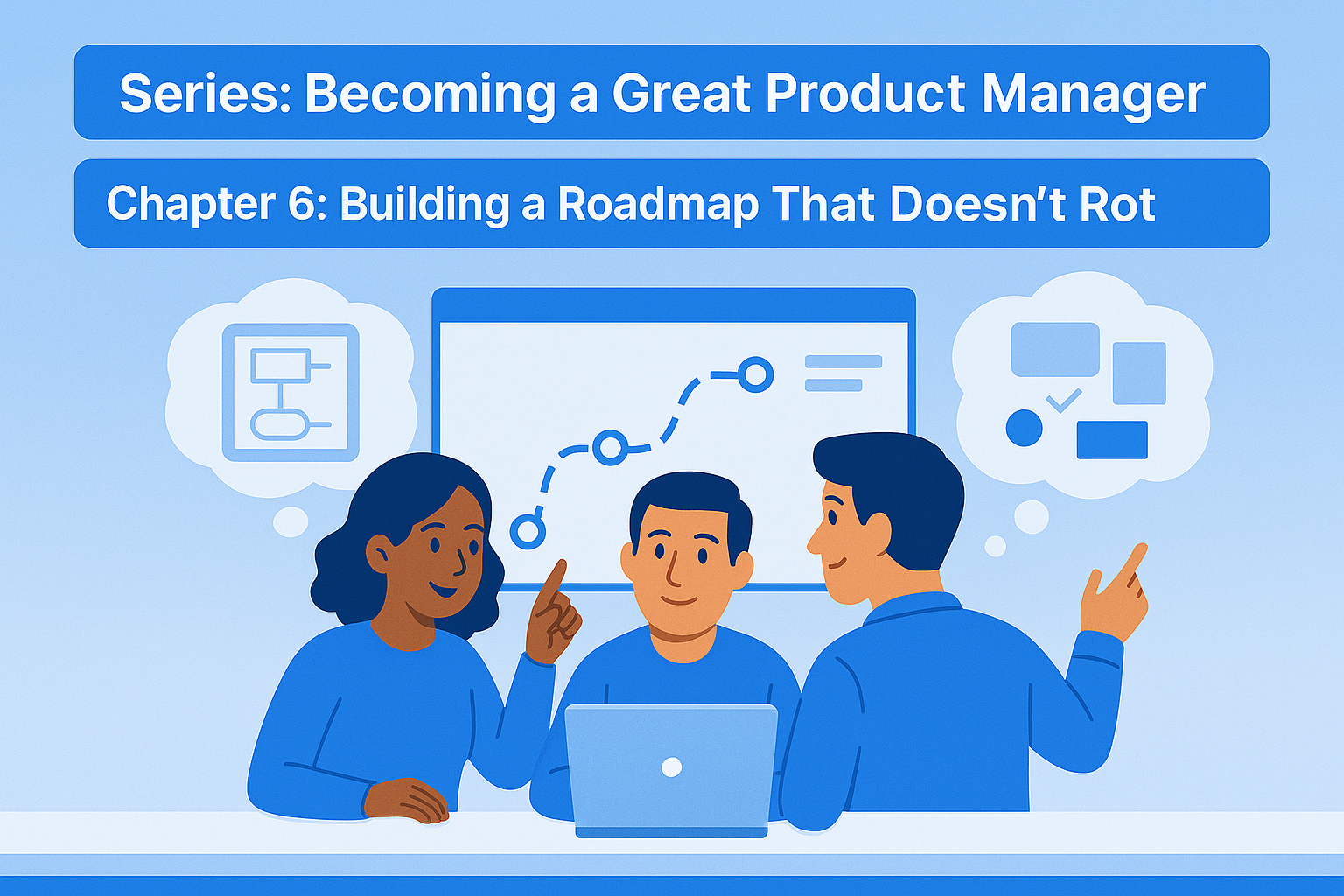· Product Management · 4 min read
Chapter 3: Product Thinking vs Project Thinking
Great product managers think beyond deliverables. Learn the critical difference between product thinking and project thinking to drive real impact.
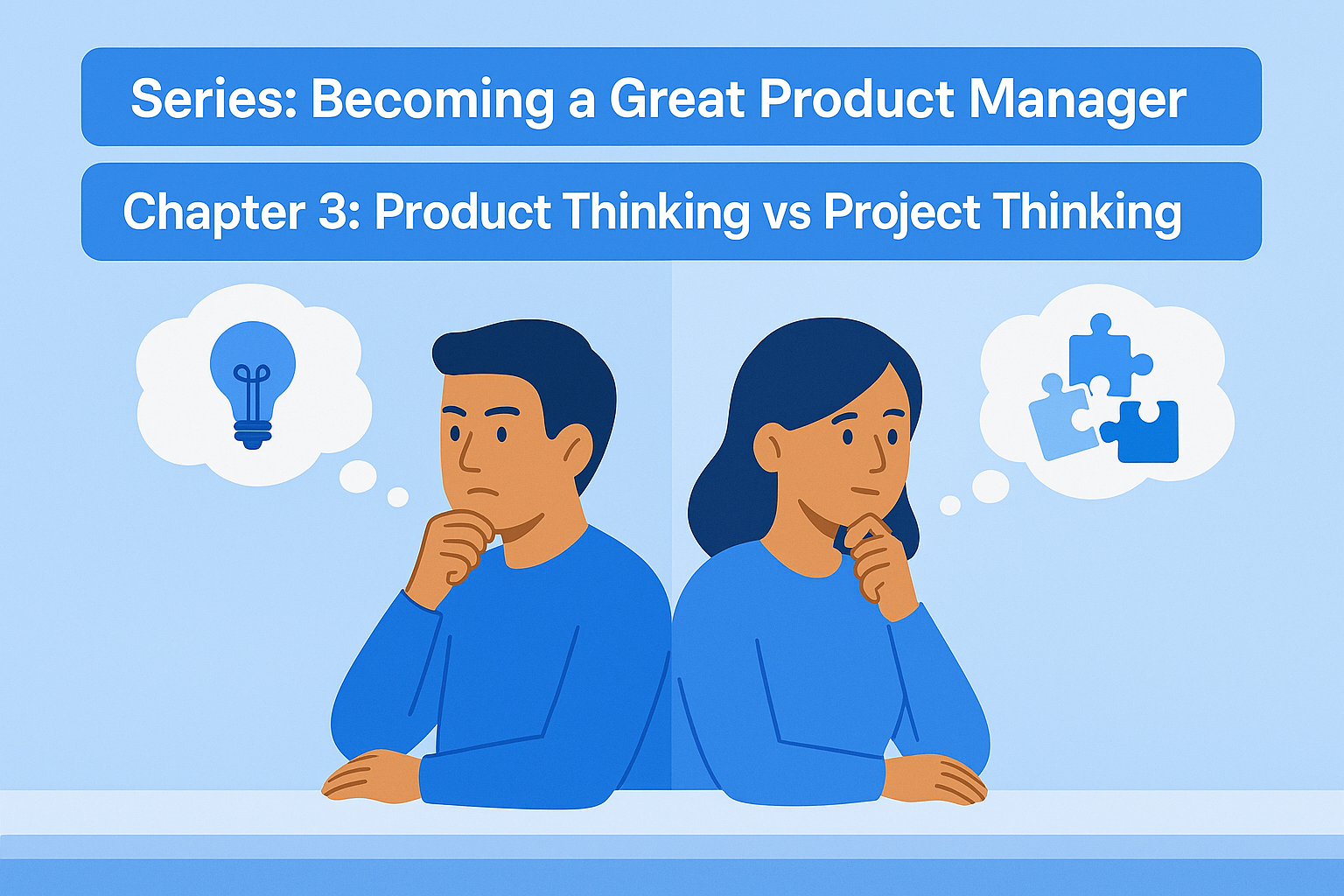
Chapter 3: Product Thinking vs Project Thinking
In Chapter 2, we explored how to manage chaos without burning out.
Now, let’s dive into a subtle but crucial difference that separates great product managers from the rest: the mindset of product thinking versus project thinking.
1. What Is Product Thinking?
Product thinking is about solving real user problems, not just completing tasks.
It focuses on outcomes rather than outputs.
- Who is the user?
- What problem are we solving?
- How will success be measured?
When you practice product thinking, every feature, improvement, or initiative starts with understanding the need behind the request.
You prioritize based on impact, not just stakeholder urgency or project deadlines.
Example:
Imagine your team is tasked with improving engagement in a fitness app.
Instead of adding a leaderboard because a stakeholder requested it, you conduct user interviews and discover that users are more motivated by personal streaks than by competition.
This insight shifts your focus to building daily habit streaks and personalized milestones, leading to greater retention.
2. What Is Project Thinking?
Project thinking, by contrast, is about completing predefined tasks on time and within budget.
It emphasizes execution over discovery.
- Deliverables take priority over outcomes
- Success is measured by shipping on schedule
- Focus tends to be internal rather than user-centered
Project thinking is essential for managing complexity. However, if it dominates, teams risk building products that meet every specification yet fail to satisfy real needs.
Example:
Suppose you are launching a new messaging feature.
With a project mindset, you ensure that the chat interface, file attachments, and notifications are delivered exactly on time.
But after launch, you realize that users wanted quick voice notes, not another text chat.
The project succeeded, but the product missed the mark.
3. Key Differences
| Aspect | Product Thinking | Project Thinking |
|---|---|---|
| Focus | User problems and outcomes | Timelines, deliverables, resources |
| Measurement | User success, adoption, retention | Project completion, deadlines met |
| Planning | Flexible and iterative based on feedback | Fixed and scoped upfront |
| Success Criteria | Solving the right problem effectively | Delivering the defined solution efficiently |
Both mindsets are valuable, but product thinking must lead.
Otherwise, teams risk executing perfectly on the wrong problem.
Example:
A product team was asked to redesign a checkout page to look more modern.
With product thinking, they first analyzed where users were dropping off and found that confusion around shipping options was the real issue.
Instead of just refreshing the visuals, they simplified the shipping flow, resulting in a 20% higher conversion rate.
4. Why Product Thinking Matters for PMs
As a product manager, your core responsibility is not only ensuring that work gets completed, but that the right work gets prioritized.
- Product thinking keeps teams focused on outcomes that drive business and user success
- It empowers you to challenge assumptions and push for better solutions
- It helps you avoid building features that meet specs but miss the mark
Example:
During sprint planning, a developer suggests adding a “dark mode” to the app.
Instead of approving it immediately, you apply product thinking by asking whether this improves user engagement or solves an existing pain point.
After gathering feedback, you realize users are requesting faster load times instead, leading to a shift in priorities.
5. How to Shift from Project Thinking to Product Thinking
If you notice yourself slipping into project management mode too much, here’s how to shift back:
- Start with the user problem, not the feature request
- Ask “what outcome are we trying to achieve?” before defining deliverables
- Measure success based on user adoption or behavior change, not just launch dates
- Encourage discovery work even during execution phases
Tip:
TaskFrame helps teams stay grounded in product thinking by linking tasks directly to user goals, wireframes, and dynamic documentation.
This way, the focus remains on delivering value, not just checking off tasks.
Example:
Instead of managing a long backlog of tasks manually, you set up TaskFrame to visualize user flows directly inside the wireframe.
This allows your team to prioritize based on actual user journeys rather than abstract task lists, improving alignment and reducing wasted effort.
Conclusion
Great product managers balance execution with discovery.
They ensure that what gets shipped truly solves user problems and drives meaningful impact.
Start today by asking: Are we solving the right problem, or just completing the next task?
In the next chapter, we will explore one of the most practical skills for product managers: writing better product specifications that empower teams to build smarter and faster.
Continue to Chapter 4 →
Try TaskFrame and start building products that users truly need.
